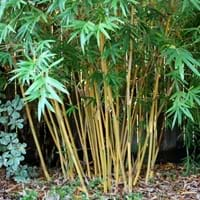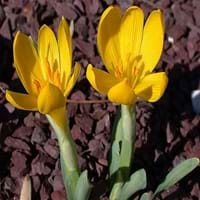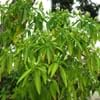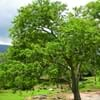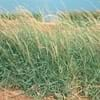Life Span
Perennial
Perennial
Type
Grass
Bulb or Corm or Tuber
Origin
China
Southern Europe, Mediterranean, Turkey, Iran, Central Asia, Western Asia
Habitat
Dry Forest, hedge rows, open Woodlands, Shady Edge
countryside, Rural areas
USDA Hardiness Zone
8-15
Not Available
AHS Heat Zone
12 - 1
Not Available
Sunset Zone
Not Available
21,22
Habit
Clump-Forming
Clump-Forming
Minimum Width
Not Available
Flower Color
Not Available
White, Yellow
Flower Color Modifier
Bicolor
Bicolor
Fruit Color
Not Available
Not Available
Leaf Color in Spring
Light Green, Dark Green
Green, Gray Green
Leaf Color in Summer
Light Green
Light Green
Leaf Color in Fall
Light Green, Dark Green
Several shades of Green
Leaf Color in Winter
Light Green, Dark Green
Light Green
Leaf Shape
digitate
Strap shaped
Plant Season
Spring, Summer, Fall, Winter
Spring, Fall, Winter
Sunlight
Full Sun, Partial Sun, Partial shade
Full Sun
Type of Soil
Loam, Sand
Loam, Sand
The pH of Soil
Acidic, Neutral, Alkaline
Neutral, Alkaline
Soil Drainage
Average
Well drained
Bloom Time
Not Available
Early Spring, Late Summer, Early Fall, Fall, Late Winter
Tolerances
Drought
Drought
Where to Plant?
Container, Ground
Container, Ground, Pot
How to Plant?
Budding, From Rhizomes, Seedlings
By dividing rhizomes, tubers, Corms or bulbs, Offsets
Plant Maintenance
Medium
Medium
Watering Requirements
Average Water Needs
Average Water Needs, Do Not over Water, Requires regular watering
In Summer
Lots of watering
Lots of watering
In Spring
Moderate
Moderate
In Winter
Average Water
Average Water
Soil pH
Acidic, Neutral, Alkaline
Neutral, Alkaline
Soil Type
Loam, Sand
Loam, Sand
Soil Drainage Capacity
Average
Well drained
Sun Exposure
Full Sun, Partial Sun, Partial shade
Full Sun
Pruning
No need to prune
Remove damaged leaves, Remove dead branches, Remove dead leaves
Fertilizers
All-Purpose Liquid Fertilizer
All-Purpose Liquid Fertilizer
Pests and Diseases
Red blotch
Cutworms
Plant Tolerance
Cold climate, Drought, Heat Tolerance, Wet Site
Drought
Flower Petal Number
Single
Single
Foliage Texture
Medium
Fine
Foliage Sheen
Matte
Matte
Attracts
Butterflies
Cutworms, Flies
Allergy
Not Available
poisonous if ingested
Aesthetic Uses
Showy Purposes
Bonsai, Bouquets, Showy Purposes
Beauty Benefits
No Beauty Benefits
Not Available
Environmental Uses
Air purification, Food for insects, Wildlife
Air purification
Medicinal Uses
Not Available
No Medicinal Use
Part of Plant Used
Stem, Tree trunks
Flowers
Other Uses
Economic Purpose, Traditional medicine, Used As Food, Used for woodware, Used in Furniture, Used in paper industry
Used as Ornamental plant
Used As Indoor Plant
No
No
Used As Outdoor Plant
Yes
Yes
Garden Design
Container, Feature Plant, Hedges, Screening / Wind Break, Tropical
Container, Cutflower, Lawns and Turf, Mixed Border, Rock Garden / Wall, Wildflower
Botanical Name
BAMBUSA multiplex
STERNBERGIA
Common Name
Clumping Bamboo, Hedge Bamboo
Sternbergia
In Hindi
हेगड़े बांस
Sternbergia
In German
Hedge Bambus
Sternbergia
In French
Bamboo Hedge
Sternbergia
In Spanish
bambú de cobertura
Sternbergia
In Greek
hedge Μπαμπού
Sternbergia
In Portuguese
Bamboo Hedge
Sternbergia
In Polish
Żywopłoty Bamboo
Sternbergia
In Latin
Sepi Bamboo
Sternbergia
Phylum
Magnoliophyta
Tracheophyta
Class
Liliopsida
Magnoliopsida
Order
Cyperales
Asparagales
Family
Poaceae
Amaryllidaceae
Genus
Bambusa
Sternbergia
Clade
Angiosperms, Commelinids, Monocots
Angiosperms, Monocots
Tribe
Bambuseae
Not Available
Subfamily
Bambusoideae
Amaryllidoideae
Number of Species
Not Available
Properties of Hedge Bamboo and Sternbergia Lutea
Wondering what are the properties of Hedge Bamboo and Sternbergia Lutea? We provide you with everything About Hedge Bamboo and Sternbergia Lutea. Hedge Bamboo doesn't have thorns and Sternbergia Lutea doesn't have thorns. Also Hedge Bamboo does not have fragrant flowers. Hedge Bamboo has allergic reactions like Not Available and Sternbergia Lutea has allergic reactions like Not Available. Compare all the properties and characteristics of these two plants. Find out which of these plant can be used as indoor plant. If you are interested to decorate your house and garden, find out aesthetic uses, compare them and select the plant which will beautify your surrounding. Along with beautification, try comparing medicinal and edible uses of Hedge Bamboo and Sternbergia Lutea and you can choose the plant having best and most benefits.
Season and Care of Hedge Bamboo and Sternbergia Lutea
Season and care of Hedge Bamboo and Sternbergia Lutea is important to know. While considering everything about Hedge Bamboo and Sternbergia Lutea Care, growing season is an essential factor. Hedge Bamboo season is Spring, Summer, Fall and Winter and Sternbergia Lutea season is Spring, Summer, Fall and Winter. The type of soil for Hedge Bamboo is Loam, Sand and for Sternbergia Lutea is Loam, Sand while the PH of soil for Hedge Bamboo is Acidic, Neutral, Alkaline and for Sternbergia Lutea is Neutral, Alkaline.
Hedge Bamboo and Sternbergia Lutea Physical Information
Hedge Bamboo and Sternbergia Lutea physical information is very important for comparison. Hedge Bamboo height is 460.00 cm and width Not Available whereas Sternbergia Lutea height is 10.20 cm and width 7.60 cm. The color specification of Hedge Bamboo and Sternbergia Lutea are as follows:
Hedge Bamboo flower color: Not Available
Hedge Bamboo leaf color: Light Green and Dark Green
Sternbergia Lutea flower color: White and Yellow
- Sternbergia Lutea leaf color: Green and Gray Green
Care of Hedge Bamboo and Sternbergia Lutea
Care of Hedge Bamboo and Sternbergia Lutea include pruning, fertilizers, watering etc. Hedge Bamboo pruning is done No need to prune and Sternbergia Lutea pruning is done Remove damaged leaves, Remove dead branches and Remove dead leaves. In summer Hedge Bamboo needs Lots of watering and in winter, it needs Average Water. Whereas, in summer Sternbergia Lutea needs Lots of watering and in winter, it needs Average Water.
